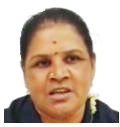Bangkok, 15 November (in parallel to Research Conference) Room: Sigma 1 (6th floor) Context The communications workshop will be an interactive…
This article explains why the Public Affairs Centre’s (PAC) case study on women in the workforce served as an ideal tool for communicating research to a broader audience.
Research organisations like PAC are often in a dilemma on what sort of communications tool to use to reach their target audience. As a communicator, I explore, suggest and discuss with the researchers what the best way will be to communicate their research findings effectively. For Southern Voice’s “State of the Sustainable Development Goals” (SVSS) project, we did field research in various regions of India. A case study is an empirical research method. It seeks to answer the “how”- and “why”-questions that are often missed in quantitative approaches. That is why it is ideal for field research. I decided to use the case study as a tool to investigate trends and situations on the various aspects we were addressing in the project.
Our SVSS project is titled “Will Women be a part of India’s future Workforce?”. The core objectives of the research project were:
- to understand the challenges that Indian women face
- and their reasons to join the labour force
PAC wanted to examine whether there is a synergy (meaning a positive correlation) or a trade-off (a negative effect) between achieving the twin objectives of economic growth and decent work for all, which is Sustainable Development Goal (SDG) 8. We wanted to develop an understanding of the relationships between the demand and supply-side factors of the labour market. And finally, we sought to identify how skilling programmes can become more inclusive, especially for women.
Importance of using a case study
Keeping the above in mind, the research team narrowed down the scope to three prominent geographic areas in India. The focus of the research was to understand the structure and agency issues that affect the female labour force participation rate. The other was to review the skill development programme Pradhan Mantri Kaushal Vikas Yojana (PMKVY). It is a flagship scheme of the Ministry of Skill Development & Entrepreneurship (MSDE), Government of India.
We agreed that a case study captures the essence of what the research is about. It is a great tool to tell a human story, based on the uniqueness of the findings. I began by understanding what a case study is, and I learnt that a case study:
- Provides information which may not have been conveyed through research analysis, for example, the emotional aspects, feelings, perceptions of the persons interviewed.
- Provides a story about the reality of persons affected by the issue.
- Allows the presentation of data in a visual manner.
However, I felt that I had to remember:
- to avoid lengthy presentations, otherwise, I would lose the interest of my audience.
- to ensure that there were validity and evidence, by providing names, faces and stories of the people involved.
- to capture critical aspects, identify the problem, convey what the problem is and what it meant in a larger context.
Based on the above, I planned a basic outline (around 4-5 bullet points) to help focus on what I wanted to convey.
In building the case study, I realised that the main benefits were:
- Being comprehensive, as it helps establish a deeper understanding of a research topic.
- That interviews always help gain a better understanding of the topic and what an interviewee is trying to convey.
- Exploring common problems in greater detail.
In short, I believe that using case studies for communications help the audience of a research study gain qualitative insights and a more nuanced, unbiased understanding of a complicated situation. In addition to this, it can be used as a tool for cases with a unique or interesting story to be conveyed. There is no substitute for real ground knowledge.
About the SVSS project
Southern Voice’s “State of the SDGs” initiative provides evidence-based analysis and recommendations to improve the delivery of the Sustainable Development Goals (SDGs). As a collaborative initiative, the program compiles a broad range of perspectives that are usually missing from international debates. This report aims to fill an existing knowledge gap. Southern Voice is confident that it will enrich the discussions on the SDGs and level the playing field with new voices from the Global South.
Text editor: Gabriela Keseberg Dávalos
“The reason I joined work was to support my husband in funding our children’s education because it is of the utmost importance to me. I feel education is extremely important, especially for a girl. There are a lot of people like me who face hardship due to lack of education. I’m not sure if I would have had the opportunity to study had I joined any other organisation. Women must study because that is the only tool that will help them to progress in their life”.
Krishnaveni, Senior Team Lead, SRK Polymers, Coimbatore
“Our financial situation wasn’t good, and I couldn’t study because of it. My mother went through a lot of hardships, and I had to support her. I joined as an ordinary deflasher, but after so many years of experience, I am now the head of the deflashing team. Initially, I had no knowledge of computers, but thanks to this organisation, I learnt how to use them, and I now handle all computer related work as well”.




